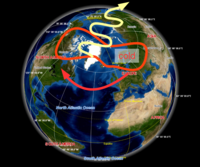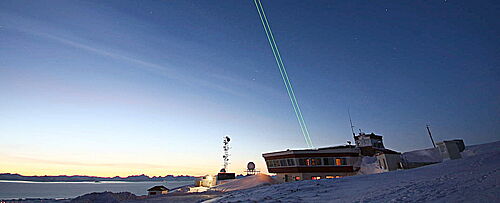Planetary waves during winter
Planetary waves are the main cause of high variability of the polar atmosphere during winter. This large-scale wave motions in the troposphere and stratosphere are particularly pronounced in the Northern Hemisphere and cause regularly so-called "sudden stratospheric warmings" in winter. These unexpected warming of up to 90 ° C above the standard temperature of the stratopause is observed for several decades. Now we extend these studies to the effects for the atmosphere above the stratopause. The changes in the dynamics of the atmosphere during stratospheric warmings are interesting since they are similar local air currents as for the winter-summer transition in the entire hemisphere. By using the regular wind and temperature measurements by lidar and radar in the stratosphere and mesosphere at middle and high latitudes, we can examine the thermal and dynamical structure. From our observations in the Northern Hemisphere we find a high variability from day to day of the parameters studied.
This is an indication that the polar vortex (the low pressure area formed regularly in the winter stratosphere over the polar region) is often disturbed. Local measurements are combined with hemispherical observations of satellites, in order to investigate the cause and effect of local increases in temperature more accurately. This allows that both planetary and local scales (<100 km) are covered. A currently open question is, for example, the interaction of planetary waves and short scale gravity waves.
Selected Publications
- R. Eixmann, V. Matthias, G. Baumgarten, M. Gerding und J. Höffner, Local stratopause temperature variabilities and their embedding in the global context, Ann. Geophys., 38, 373-383, doi:10.5194/angeo-38-373-2020, 2020.
- J. Hildebrand, G. Baumgarten, J. Fiedler und F.-J. Lübken, Winds and temperatures of the arctic middle atmosphere during January measured by Doppler lidar, Atmos. Chem. Phys., 17(21), 13345-13359, doi:10.5194/acp-17-13345-2017, 2017.














